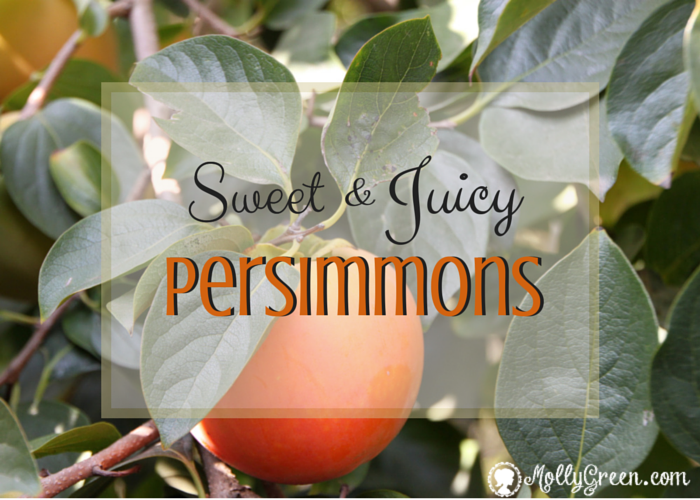By Melissa Price
Out back stands a tree loaded with a fruit that during past fall seasons I have never given more than a glance to. This year, however, the persimmon has made an impression on me. I have learned some pretty neat things that shine the spotlight on this rather dull-looking fruit—making it my new fall favorite.
What are the three varieties of persimmon?
There are three varieties of persimmon. The Fuyo is a short, firm, tomato-shaped variety. It can be eaten like a sweet, crisp apple. It’s also good in salads and dried form. The American Persimmon is mostly common to the Eastern part of the United States. It’s a great food source for wildlife, but can also be used in some yummy recipes. The Hachiya Persimmon is shaped more like an acorn and is commonly known as the baking persimmon. It must be eaten when it has softened up. It’s used in puddings and breads and pairs well with oranges and honey. Persimmons can be quite tasty once ripened, but prepare to pucker if you take a bite from an under-ripe one.
In addition to contributing to some delicious recipes, persimmons have health benefits too. Persimmons are high in vitamin C, aid in digestion, contain beneficial nutrients to fight cancer, protect from aging, and protect from the common cold and flu. Native Americans used the pulp as a poultice to treat burns and boiled the inner bark as a gargle for sore throat. The same was used externally for warts and skin cancer.
If you are interested in reaping some health benefits while trying new recipes, I found a whole Pinterest page devoted to persimmons used in breads, jams, puddings, ice cream, pie, butter, cookies, and smoothies. One jam recipe is as simple as mashing the ripened persimmons, adding brown sugar and cooking it down until the sugar melts and then spreading it on a toasted croissant. Most recipes have a lovely orange hue to them that will compliment any fall plate.
Speaking of your fall plate, one last tidbit about persimmons won me over this year. An old wives’ tale speaks of determining winter weather based on the inside of the persimmon seed, and I had to give it a try.
Going to the tree which stands out back, I cut open a seed to find a spoon inside. According to the tale, cutting open a seed should reveal either a spoon, knife, or fork. A spoon warns that winter will require us to shovel snow; a fork forecasts a mild winter, and a knife is a cold, biting and icy winter that will cut like a knife. Additionally, every persimmon tree will predict the same weather and all seeds from the tree should have the same seed “sign” inside. I tried that out as well, and sure enough, three different trees among our property each had the spoon inside and multiple seeds from the tree contained the spoon inside too. Apparently, past generations prepared their winters according to the revelations of a persimmon seed, and several comments I read regarding this practice said the persimmon is accurate.
Now, when I head out back to the tree loaded with fall fruit, I will appreciate it as a treat to add to my hogs’ feed, a new addition to my cooking, and my own personal weatherman. Here’s to my new favorite fall fruit!
Melissa Price is a former public school teacher turned homeschool mother to her son and daughter. She loves all things fall, honey bees, and herbs. She has always had an old heart and lives best when life is simple.





